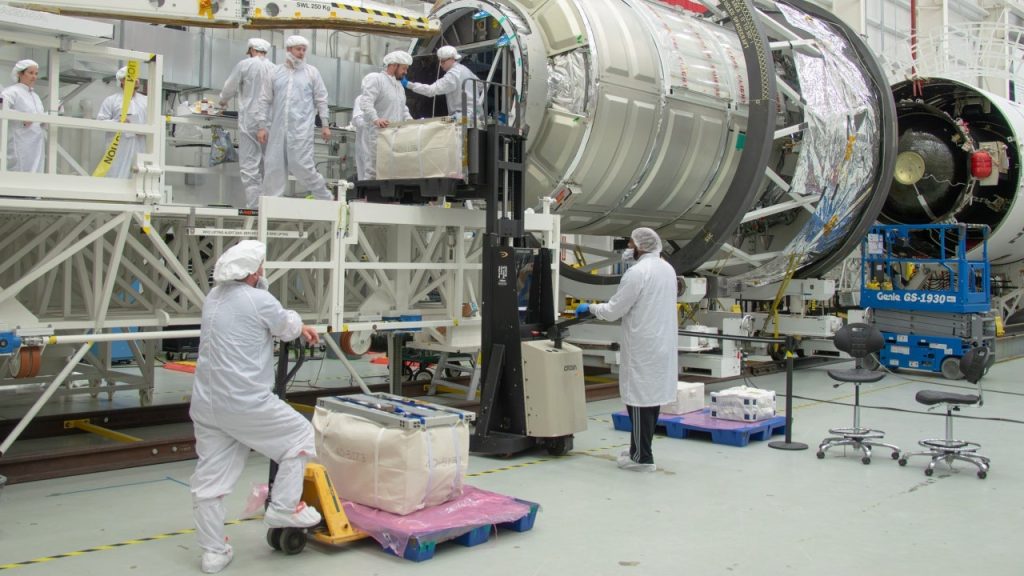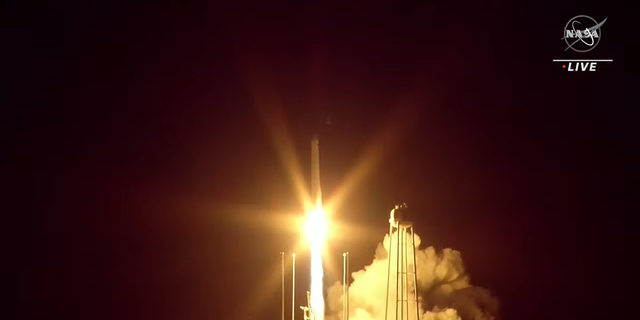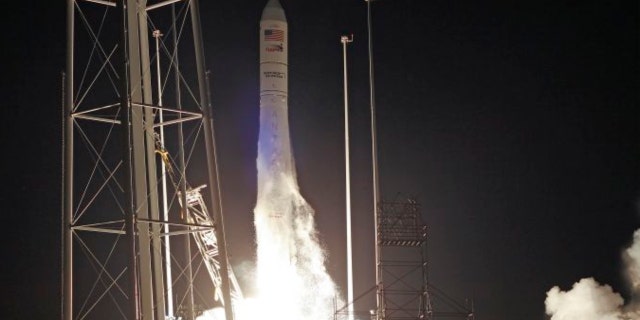
A Purdue University experiment was sent to the International Space Station on Tuesday to collect data toward understanding how reduced gravity affects condensation.
The experiment launched on Northrop Grumman’s 19th commercial resupply services mission onboard an Antares 230+ rocket at 8:31 p.m. from NASA’s Wallops Flight Facility in Virginia.
The NG-19 spacecraft is expected to dock to the space station early Friday morning.
Along with other science investigations, with those and cargo on the Cygnus cargo spacecraft weighing more than 8,200 pounds, a module will conduct the second experiment of a facility called the Flow Boiling and Condensation Experiment. The FBCE has been collecting data on the orbital laboratory since August 2021.
NASA HEARS VOYAGER 2 ‘HEARTBEAT’ AFTER ACCIDENTALLY CUTTING OFF COMMUNICATION

A Northrop Grumman Cygnus resupply spacecraft is on its way to the International Space Station with more than 8,200 pounds of NASA science investigations and cargo after launching Tuesday from the agency’s Wallops Flight Facility in Virginia. (NASA)
Last summer, mechanical engineering professor Issam Mudawar and his students finished their first experiment gathering data from a module of FBCE on the space station that measure the effects of reduced gravity on boiling.
When additional components arrive with the NG-19 spacecraft, researchers will be able to conduct the second experiment, which will investigate how condensation works in a reduced-gravity environment.

Northrop Grumman’s Antares rocket launches the S.S Laurel Clark Cygnus spacecraft on Aug. 1 from Wallops Island, Virginia, for cargo delivery to crew aboard the International Space Station. (Northrop Grumman)
Both experiments’ modules for FBCE will remain in orbit through 2025.
HUBBLE SPACE TELESCOPE SEES PLANET AROUND RED DWARF STAR GETTING HICCUPS

Issam Mudawar’s research on heat transfer could enable space habitats to be built in extreme environments like the moon. (Purdue University photo/John Underwood)
“We have developed over a hundred years’ worth of understanding of how heat and cooling systems work in Earth’s gravity, but we haven’t known how they work in weightlessness,” Mudawar explained in a statement.
To develop FBCE, his lab worked with NASA’s Glenn Research Center in Ohio and the team spent more than a decade developing FBCE hardware to fit the space station’s Fluids Integrated Rack.

A Purdue University experiment aiming to find out how condensation works in reduced gravity is onboard Northrop Grumman’s 19th commercial resupply services mission to the International Space Station for NASA. (NASA/Danielle Johnson)
The results of the research will not only support exploration on the moon or Mars – to live there, humans will need heat and air conditioning that can function in reduced gravity and extraterrestrial temperatures – but also help spacecraft to travel longer distances.
CLICK HERE TO GET THE FOX NEWS APP
The data could also help spacecraft to refuel in orbit by understanding how reduced gravity affects the flow boiling behavior of the cryogenic liquids that spacecraft use as propellant.

 Latest Breaking News Online News Portal
Latest Breaking News Online News Portal




